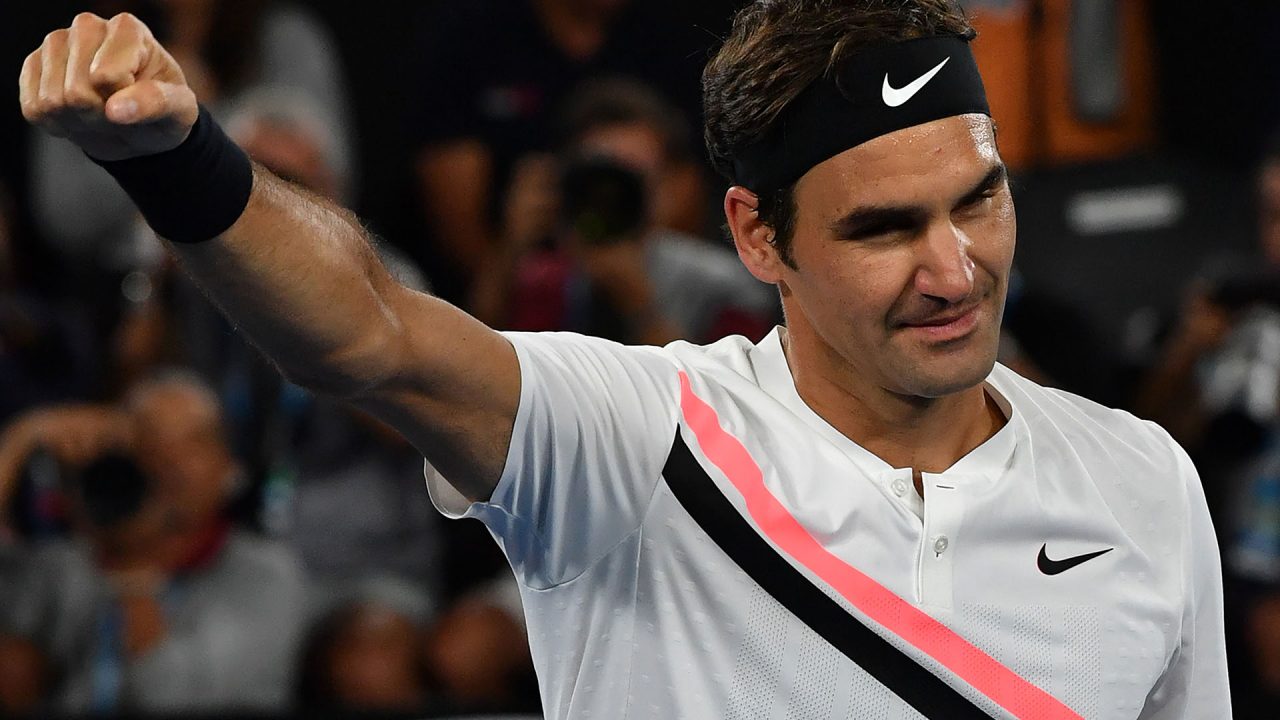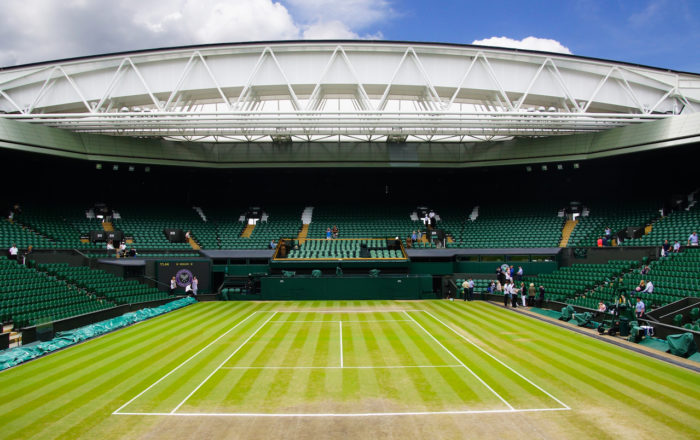
An incursion through the heyday of the great tennis champions, reached without exception by vulnerabilities that cost him important trophies or victories. A slalom among the myths, realities and explanations of psychologists.
How many times have you watched your favorites click in the most important moments of some games or tournaments? Have you helplessly witnessed unsuspected upheavals, trying to find answers to the downfalls of those you encourage?
What is the first impulse? Probably the most convenient is to invoke “bad luck”, “bad day”, “that point that changed everything”, “that unhappy gang”, “that decision of the referee”, “that first service laughing past the redemptive touch “. Then, some may go even further, questioning the mental combativeness of that player. For example, how many times have I not heard remarks such as: “He gave in under pressure, he doesn’t have a great player mentally”?
Adherents of conspiracy theories may even take the explanations to the area of sports betting and the idea of “deliberate defeat”.
“Choke”, between myth and reality
However, what are the opinions of specialists and sports psychologists? They call this simple phenomenon: “choke”.
Freely translated, the term means “to suffocate”, “to drown”, etc. Beyond the translation, it brings together, in sports, an accumulation of harmful effects that can occur in the physique or in the psyche of the players even in the key moments of the matches.
“All players go through something like that”
Dr. Allen Fox, now 80, a former American tennis player, a former Wimbledon quarterfinalist in 1965, a well-known college coach in the United States, gave a brief definition of “choking” in 2007. to dispel the myth that the great champions do not face this problem.
“Everyone who revolves around this sport knows what ‘choking’ means. You start to get excited, you have difficulty controlling yourself, you start making mistakes. Some people go out and say that “choking” is specific to the weak, that it denotes a lack of character, that it does not appear in great players and great champions. It’s not like that, of course. All players go through this. “ – Dr. Allen Fox, for the “Tennis Warehouse” channel
Fear of losing and fear of winning. And some problems
The website sportspsychologytennis.com publishes, in 2017, an extensive material dedicated to this phenomenon. American specialists were trying to identify what changes could occur in the body of a tennis player during the moments of maximum load of the matches.
First, a new definition. According to her, “choking” occurs when a tennis player, overmotivated to achieve his goals, suffers a sudden decrease in intensity due to stress or worry. The fear of losing or even the fear of winning destabilizes a player’s psyche so much that he crashes.
So what can happen to the players in those moments?
▪️”Adrenaline is triggered in the blood, it increases heart rate, blood pressure and energy. If not used, the player becomes nervous and anxious ”;
▪️”Breathing is more difficult due to the contraction of the chest and neck muscles. Less oxygen reaches the brain and this affects the player’s concentration and decision making ”;
▪️”The blood is redirected from the fingers, toes and skin to the major muscle groups. Therefore, the player’s legs become heavy and slow, impeding movement ”;
▪️”Digestion stops, because the stomach and intestines save energy. The player is nauseous, and the production of saliva stops and gives him the feeling of a dry mouth ”;
▪️”The muscles are tense, which means that the player tightens the racket harder. This and the decrease in the volume of blood in his fingers affect his blows ”;
▪️The intestines and bladder dilate to prepare the body for the so-called “fight or run” reaction. The outcome? The player may feel the need to urinate … or worse.
How Simona Halep, Federer or Nadal “chokered”
The explanations of sports psychologists tend to be true, and the above sensations were probably experienced by all professional players, regardless of their caliber.
The primary impulse can urge us to call Monfils “choker”, a player with 17 defeats in 17 matches with Djokovic, the last time in 3 match balls. Or Medvedev, who loses inexplicably with Nadal in London, from 5-1 in the decisive. Or Fognini. Or the retired Daniela Hantuchova, the author of several resounding defeats throughout her career.
1. Simona Halep and the “plot twist” from the final of Roland Garros 2017
If it were a movie, the Halep – Ostapenko match in the 2017 Roland Garros final would undoubtedly contain a plot twist.
June 10, 2017, Paris. Full of eyes, crowded and with hundreds of Romanians, the “Philippe Chatrier” arena was ready for Simona Halep’s first triumph in a Grand Slam tournament. Opponent? The unpredictable Jelena Ostapenko, specialized, among others, in heavy forehands and Russian roulette.
Simona’s superior experience, still at the beginning of her partnership with Darren Cahill, is a definite favorite Romanian loan before the final. And the calculations of the paper were largely observed for a set and a half and a short fragment of the decisive set.
Simona then led 6-4 and 3-0 and wasted three break points by which she would have distanced herself at 4-0. It was probably the game that weighed the most in the economy of the final. The three break points saved by Ostapenko in some moments when Halep hesitated to press the trigger resolutely reassembled the Latvian, who meticulously rebuilt her return to the match.
Simona also had other chances in the third set. She was 3-1 and the service, but her game disintegrated from that moment. Most likely, in a spiral of emotions and regrets, Halep did not score at all on the table. 3-6 in the decisive and a memory that still hurts, although fate would smile on our compatriot a year later.
“It simply came to our notice then. Luck was on her side in some lines, and those blows demoralized me “, explained Simona bitterly at the press conference after the match.
2. Roger Federer: Gone in 60 seconds
Last year’s Wimbledon final, listed as one of the best in the history of the London tournament, marked a striking turnaround, a completely unexpected fall of the great Swiss champion.
After returning from 1-2 sets, Federer, 38 months without a month at the time, found unsuspected resources and managed to turn the fate of the final in his favor. In that decisive roller-coaster, which the Serb won in the tie-break (13-12), Federer led 8-7 and 40-15. On your own service!
In how many situations out of 100 would Federer have closed the match with an ace? Probably in ’99. It’s just that something in the mind of the Swiss, just one point away from the 21st Grand Slam of his career, got stuck in those fateful 60 seconds.
▪️A wrong calibrated forehand and it makes 40-30;
▪️A totally uninspired coming to the net, and Djokovic equalizes at 40 and saves the second ball of the match.
Federer, the master of net and volleyball, attacked hastily, far too short, and could only watch the Serbian’s surgical passing. Equality, rebreak and a rare opportunity that collapsed like a domino game.
3. Rafael Nadal between “King of Clay” and “King of Choke”
Considered by many voices the most formidable player on the circuit from a mental point of view, Rafael Nadal, the current world number two and the best slag player of all time, also had moments when he gave in under pressure.
And the most famous episodes are the ones that deprived him of the opportunity to have 21 Grand Slam tournaments and beat Federer in the battle for “GOAT”. Where else could they happen if not in Australia, at the weakest Spanish Slam?
“There are many defeats that I miss, but for me the most painful was the one against Djokovic, from the final of the Australian Open in 2012”, said Toni, Nadal’s uncle and former coach, in an interview given a few years ago.
▪️The final in Melbourne eight years ago, lost to Djokovic after 5 hours and 53 minutes (the longest final in history), will probably follow his entire career in Spanish.
▪️Saved from the rain at a time when Djokovic dominated the match authoritatively, a completely different version of Nadal after returning from the locker room was close to cutting the match in his favor.
The Spaniard led 4-2 in the fifth set, had the service, but slightly missed a backhand at the score of 30-15. Instead of 40-15, it became 30-30, and from there everything fell apart for the Iberian, in one of the few moments of his career in which he seemed to have mentally cracked. The Serb recovered and won 7-5, in another classic match of recent years.
▪️5 hours and 53 minutes of fierce fighting in the Australian heat and two relevant moods at the end.
Five years later, history would repeat itself for Nadal. Also with a disadvantageous outcome, also in Melbourne, but against Roger Federer. In 2017, the two came to Australia after a considerable break caused by injuries. Nadal, favorite 9, and Federer, favorite 17, overcame any pessimistic prognosis and ended up facing each other again in the last act of Antipozi, 8 years after the final played by the two in 2009.
Without necessarily being in their best periods, Nadal and Federer offered a suspenseful final, in which the Spaniard escaped victory. Although he led 3-1 in the decisive, Rafa inexplicably entered probably the worst period of play in his entire career. He didn’t win a single game, giving up 3-6 and missing the chance to get a Slam again, after a break of almost 4 years.
▪️A more dejected Nadal than ever congratulates Federer on the net.
Although many equated that failure with his final exit from the stage, Nadal overcame the moment and has since won no less than 5 Grand Slam tournaments.








